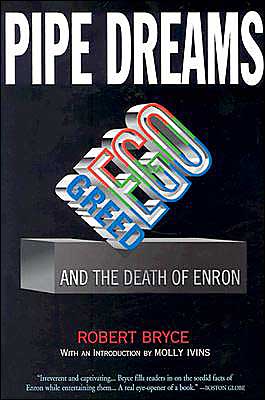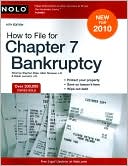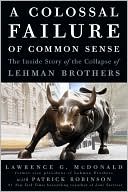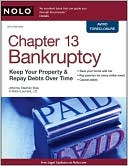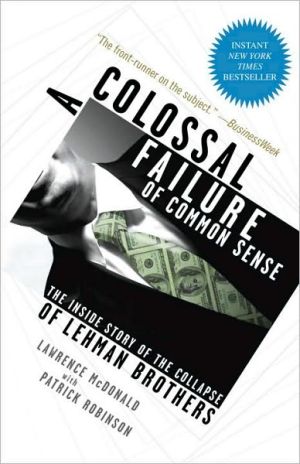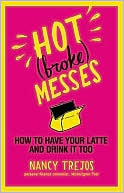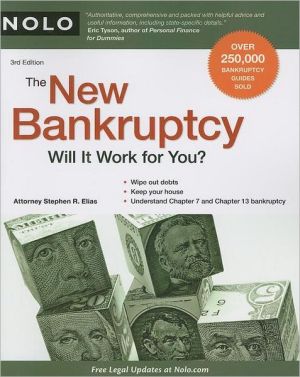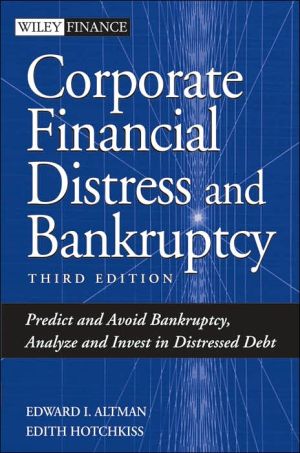Pipe Dreams: Greed, Ego, and the Death of Enron
After the shocking collapse of Enron in fall, 2001 came an equally shocking series of disclosures about how America's seventh-largest company had destroyed itself. There were unethical deals, offshore accounts, and accounting irregularities. There were Wall Street analysts who seemed to have been asleep on the job. There were the lies top executives told so that they could line their own pockets while workers and shareholders lost billions. \ But after all these disclosures, the question...
Search in google:
The riveting and revelatory inside story of the most spectacular business failure in decades. With a new afterword by the author. Austin Chronicle There's nothing familiar about what Bryce has accomplished in this superb book...Meticulously researched...Bryce presents [financial] stuff with...admirable clarity.
Author's NoteXIIntroductionXV1The Job Fair12John Henry Kirby and the Roots of Enron133Buy or Be Bought244The Merger315The Lays Move to River Oaks346The Valhalla Fiasco377"The Smartest Son of a Bitch I've Ever Met"448Banking on the Gas Bank529Mark-to-Market Account-a-Rama6010Enron Goes International: Teesside6911The Big Shot Buying Binge7612"Kenny Boy"8513The Dabhol Debacle9314OPIC: Sweet Subsidies10415A Kinder, Gentler Enron11116The Reign of Skilling12017"A Pit of Vipers"12618Cash Flow Problems, Part I13219Chewco: The 3-Percent Solution13720Sexcapades14421The Family Lay14922LJM115523Buying Off the Board16124The Deal Diva16925Enron's Waterworld17526Hyping the Bandwidth Bubble19027Andy Fastow Arrives...in River Oaks19928Strippers and Stock Options20529Casino Enron: Cash Flow Problems, Part 221530LJM222331The Big Five Versus the SEC23232Derivatives Hocus-Pocus24033Ken Rice: Missing in Action24534Analysts Who Think24935Air Enron25736Skilling Says a Bad Word26737George W. to the Rescue, Part 127038Broadband Blues27539Sleepless in Houston: Cash Flow Problems, Part 328440Sherron Watkins Saves Her Own Ass29341George W. to the Rescue, Part 230042You Gotta Have Art30543Revenge of the Raptors30944"An Outstanding Job as CFO"31345Fastow Goes Bye-Bye31846Posh PJ's32147Greenspan Gets the Enron Prize32348One Restatement Too Many32849The Downgrade33450The Bankruptcy33951Epilogue: "Salvation Armani"343Notes363Bibliography375Index379
\ From Barnes & NobleWhen energy goliath Enron collapsed in the fall of 2001, business pundits and investigative journalists rushed out hurried and bemused postmortems on the unexpected bankruptcy. How, they wondered, could an entity that racked up $101 billion in 2000 be insolvent a year later? In Pipe Dreams, veteran Texas journalist Robert Bryce probes the Houston-based energy trading company for an answer. Combining wit, suspense, and a seemingly unquenchable curiosity, he charts the rapid growth and unpredicted implosion of Enron and its effect on its workers and the economy.\ \ \ \ \ Austin ChronicleThere's nothing familiar about what Bryce has accomplished in this superb book...Meticulously researched...Bryce presents [financial] stuff with...admirable clarity.\ \ \ Boston Globeirreverent and captivating...a real eye-opener...A fascinating, well-written and well-researched book that pulls the reader along, page after page.\ \ \ \ \ Publishers WeeklyFinally, an Enron book that actually explains what happened at Enron. Bryce, an Austin, Tex., journalist familiar with the energy and telecommunications industries, offers a colorful account of the most spectacular corporate self-destruction in American history. Tracing the company's history, he shows how deal-focused executives like CEO Jeff Skilling transformed a fiscally responsible energy supplier into an out-of-control trading firm. He describes risky practices, like "mark-to-market" accounting and shell corporations, in clear, concise language that doesn't confuse readers who don't have MBAs. The book relies heavily on good ol' boy colloquialisms (e.g., "If [George W.] Bush had been any more simpatico to Enron, he could've been charged with a misdemeanor under the state of Texas' buggery laws") but backs up every unusual assertion, revealing, for example, connections between Bush and Enron going back to the mid-1980s. Not that Democrats were innocent; there's also extensive coverage on what Enron got from government agencies during the Clinton administration. While the emphasis on sexual misconduct among the top brass and its correlation to the financial shenanigans is arguable, Bryce makes a reasonable case for former chairman Ken Lay's unwillingness to control his staff's behavior-and inability to lead by example. This isn't just the first book to make sense out of the debacle; it's a vivid cautionary tale about the consequences of the lurid excesses-personal and professional-of the recently ended economic bubble, where corporations and their employees were so obsessed with acquiring wealth they became "dumber than a box of hammers" about making-and saving-money. Agent, Dan Green. (Oct.) Forecast: As a contributor to the New York Times, U.S. News & World Report, Salon and the Texas Observer, Bryce shouldn't have trouble plugging his book in the business media. Once word gets out that it's an Enron book with substance, sales will be brisk. Copyright 2002 Cahners Business Information.\ \ \ \ \ Soundview Executive Book SummariesGreed, Ego and the Death of Enron\ Enron was once a stable, profitable company with some of the best energy assets in the world. Starting as a small regional gas pipeline company, Enron grew quickly into an energy giant that was the seventh-largest corporation in the United States. In the late 1990s, the company changed. Robert Bryce, a respected investigative journalist from Texas, wrote Pipe Dreams to explore why Enron failed, and uncovers the ill-fated business decisions that corrupted its leadership and brought it down in a tumultuous calamity of bankruptcy and broken dreams. \ The Scandal Breaks\ Enron's claims to fame are numerous. American stockholders lost more than $70 billion in equity value in Enron, but a handful of executives made tens, even hundreds of millions of dollars by selling their stock while Enron was being driven into the ground. Bryce explains that between 1998 and 2001, 24 Enron executives and board members sold company stock worth more than $1.1 billion. He also points out that this number does not include the "huge salaries, bonuses and other cash payments made to Enron executives during their reign of plunder."\ Fortune magazine had named Enron America's Most Innovative Company six years in a row. When Enron went bust, it was the biggest scandal to ever hit accounting, costing "Big Five" accounting firm Arthur Andersen a conviction on June 15, 2002 for obstructing justice in the Enron investigation, and virtually eliminating the company from the accounting radar screen.\ The $30,000 Office Decoration\ Bryce explores the unethical business moves of top executives along with the people side of the story, which includes extra-marital affairs, greed and excess at the top levels of a company that destroyed itself by ignoring basic rules of business management, and spending too much. When looking at the audacious expenses Enron executives put on the company tab, Bryce uncovers a brand new Gulfstream jet that cost the company $41.6 million less than nine months before the company went bankrupt, as well as a $30,000 motorcycle that one executive bought to decorate his new office.\ More Sordid Details\ Along with a moment-by-moment account of all the decisions, wrong moves and scandals that led to the company's demise over a period of just a few years, Bryce offers sordid details of the outrageous hubris of top players and devastating insight into the toll on the lives and retirement funds of employees who were burned by internal financial shenanigans. By the end of the book, he has revealed very personal stories, punctuated by high crimes and moral bankruptcy, which makes Pipe Dreams a dramatic look at the kind of corruption that can take place when politicians and big corporations become entangled in shady business deals.\ Bryce rounds out Pipe Dreams with a look at the post-Enron lives of some of its top executives. By painting a gaudy portrait of the people who walked away with millions while thousands of families lost most of their life savings, Bryce points out the injustice of a system that he writes "is seriously broken and in need of reform." He finishes his book with a look at the work being done on Wall Street to make that reform a reality before other companies suffer the devastating consequences seen by the employees of Enron. One of his suggestions to improve the auditing process is to increase the budget of the Securities and Exchange Commission, an agency he explains has "long been undermanned and underfunded."\ Extensive Research\ Bryce did some extensive research to get to the bottom of the Enron debacle. Since the many top executives who had the most access to the information surrounding the failure of Enron are keeping quiet due to lawsuits and indictments, he interviewed 200 people and collected more than 1,800 electronic documents, two dozen books and dozens of newspaper stories to get to the heart of what happened inside this Houston company over the past few years.\ Why Soundview Likes This Book\ Bryce illuminates a dark and tricky road of corporate greed, sex and scandal with his urbane humor and well-developed research. By looking closely at the people and events, he is able to shed more light on the fate of Enron than any number of newspaper articles and television news stories. His personal sense of justice and outrage provides a human perspective into the facts of the story, and allows his research to come to life in a book that is as exciting as it is muckraking. Copyright (c) 2003 Soundview Executive Book Summaries\ \ \ \ \ \ Kirkus ReviewsAn Austin-based reporter delivers the behind-the-scenes story of Enron’s rise and fall. \ As astonishing as the damage done by Enron to the American economy is the impunity with which the company operated when it was riding high in the go-go 1990s. Bryce, who understands the flamboyance built into Texas business culture, clarifies Enron’s muddled and deceptive accounting practices, deconstructs the bone-headed and perpetually hyped ventures (Enron as water giant! Enron as broadband marketeer!) while lacing his account with the sexual foibles that played a tacit part in creating the company’s anything-goes executive culture. Ken Lay set the tone by having a semi-public affair with his secretary while married to his first wife, whom Lay eventually divorced to marry the secretary. Other good-time guys at Enron included Rich Kinder, president of the company until 1996, ousted partly because Lay found out about Kinder's affair with Lay's executive assistant; Ken Rice, head of Enron's broadband division (though he knew nothing, and cared to know nothing, about broadband), who conducted public groping matches with his light of love; and Lou Pai, head of Enron Energy Services, whose taste for striptease joints was put on the company bill. Kinder's successor, the infamous Jeff Skillings, emerges in Bryce's account as the ultimate in CEO arrogance. Skillings was responsible for the two linked factors that did Enron in: accounting shenanigans and out-of-control costs. The off-the-records partnerships designed by CFO Andy Fastow hid Enron's mounting cash crisis and thus made sensible cost-control measures unlikely, especially given the executive team’s taste for sybaritic pleasures. Skillingscreated a system that rewarded revenue generation with huge bonuses, regardless of the earnings derived from the revenue-generating ventures. Enron's dealers and managers had no incentive to cut costs and could be rewarded generously for flops.\ There are sure to be many accounts of Enron's collapse, but Bryce's gossipy version will be hard to beat for sheer readability.\ \ \
